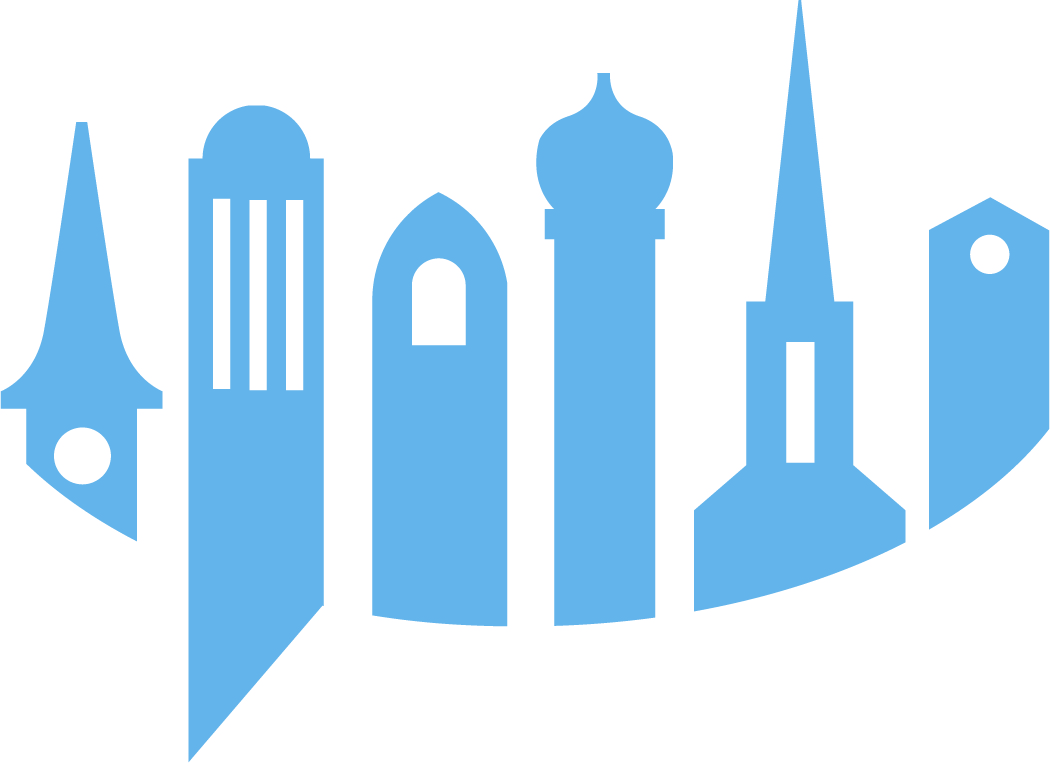The Interfaith History behind the “Holy City”
by Madeline Jane Welch
Information courtesy of Stephen Jennings White, Sr.
Most people who pass by the Karpeles Museum on the corner of Coming and Spring Street in downtown Charleston are probably unsure about what exactly the building is. The building, a white columned old Methodist church seems oddly placed on this street corner, in the “up-and-coming” Elliotborough district of the city, which is swarming with hip college students and new local restaurants. For the curious who have ventured inside, they find out that the Karpeles Museum is a part of a collection of museums scattered throughout the country, making up the world’s largest private manuscripts and documents collection. But the curious St. James Methodist church building, which was abandoned by the congregation due to Hurricane Hugo damages and was turned into the museum in 1995, is more than just a building. To Stephen Jennings White, Sr., the executive director of the Karpeles Museum and founding director of the Charleston Historical Society, it is a symbol of the history of religious diversity in the Holy City.
White is a history buff who has taught at The College of Charleston, The Citadel, St. Andrews Academy, Bishop England, Trident Technical College, and the University of Virginia. A born and raised Charlestonian, White grew up in a house downtown on Queen Street and now resides on Smith Street. Speaking with him, he enlightened me in the history of religious tolerance in Charleston, and what the nickname of this great city, “The Holy City,” means to him. From its founding, Charleston was a city distinct from others in the New World in that written into its charter was the principle of open religious worship for people from all religious backgrounds (except, White notes, Catholics in the city’s early history). The one responsible for this charter and principle of religious freedom was John Locke, the secretary of Lord Ashley Cooper, one of the 8 proprietors of South Carolina. The Carolinas, at the center of which was the great port city of Charleston, was the first English colony to allow total religious freedom in 1669, but did not allow Catholics to openly worship there until around 100 years later, with the passage of the Constitution of 1790. However, White, having done much research on Irish Catholics in Charleston, knows that Catholics did in fact come to Charleston before 1790, and continued to practice their religion albeit in secret. White points to the first Catholic mass we know of that was secretly practiced in Charleston on the corner of Tradd and Orange Street. In 1789 Charleston finally got its first official Catholic Church, St. Mary’s, making it the first Catholic church in the Carolinas and Georgia. While it took a century for Catholics to be allowed to openly worship in Charleston, that they were able to do so still with little problem in the late 1700s colonial America is pretty remarkable, given the great prejudice towards Catholics in the country up until the mid twentieth century. Anglicanism was the dominant religion of early Charleston, but the city was one of the first to welcome Jews to America, with Kahal Kadosh Beth Elohim synagogue being founded in 1749. The city was also welcoming to the French Huguenots, who created the oldest French Huguenot church in the country, founded in 1687. To White, Charleston was and has always been a place where Catholics, Jews, Quakers, Presbyterians, Anglicans, Methodists, and people of all religious backgrounds can live peacefully. White also cites how remarkable it is that the diversity of the city was not originally spread out into different neighborhoods but instead very integrated. He cites the Ansonborough district in the mid-1800s as an example of this, with the city’s 1860 census showing the area occupied by a mix of lower middle class Germans, Irish, and freed blacks. Growing up on Queen Street in the 1960s, White says, was also this way, with a mix of folks from all ethnic groups in his neighborhood. Charleston is commonly thought of by tourists and locals alike as the “Holy City” due to the prominent number of church steeples that decorate the city’s outline. But to Stephen Jennings White, Sr., Charleston is the “Holy City” because it celebrates and welcomes those who practice all religions. The nature of Charleston as a port city was that it was fertile ground which allowed for the mixing of religious identities and exposure to new things. Charleston was founded and is today still known for its ability to mesh values of southern hospitality and communal unity with respect and openness towards diversity. To White, the “Holy City” is not just about the beautiful, old churches like St. James Methodist that dot the skyline of Charleston, but the thriving legacy of religious diversity the city provides.
Stephen Jennings White, Sr.

